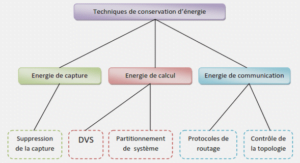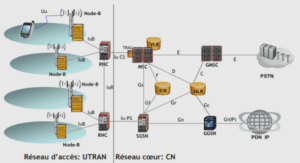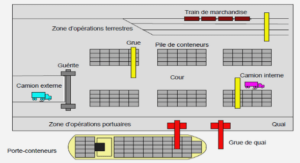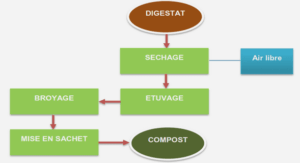Densely overlapping curves, trajectories, and edges occur in many visualizations, including parallel coordinates, time series data, GPS data showing movements of people or vehicles over time, node-link diagrams of graphs, etc. A fundamental task to support in such visualizations is the selection of subsets of curves. Currently, this is possible with a variety of techniques : clicking directly on curves, dragging out a region (by dragging a brush or by drawing a rectangle) that overlaps the curves to select, selecting curves according to some criterion such as “category” or “type” of curve, or sketching the shape of curves to select (Buono et Simeone, 2008; Holz et Feiner, 2009).
Another approach which has been less investigated to date is selection by specifying the angle or slope of curves. Such angular selection could be useful in many cases : selecting one of several overlapping clusters within a parallel coordinates plot, or one of several overlapping edge bundles (Holten et van Wijk, 2009), or selecting all the stocks rising or falling at a given rate on a given date, or all the boats moving along similar trajectories through a given region of an ocean. In some of these examples, automatic clustering might help identify groups of related curves, but clustering algorithms typically require tuning to decide how many clusters to find, whereas a user may visually identify very quickly a group of curves following some common direction and wish to select them.
In our work, we investigate a technique performed with a single drag for specifying (1) a region of interest within the visualization, (2) an angle or direction, and (3) an angular tolerance . This kind of interaction is well suited for integration into a lens widget that offers the user additional functionality, such as filtering options. As discussed later, our prototype interface allows a user to instantiate a lens widget, called a VectorLens, and select curves within it based on angular criteria. This is in contrast to previous techniques (Hauser et al., 2002) that don’t involve a lens and simply select a range of slopes over some horizontal interval, or other previous work (Hochheiser et Shneiderman, 2004) where a user paints multiple regions to define a compound selection of only curves passing through all such regions. Because our approach is oriented toward use with a lens widget, we designed our interaction technique to enable the user to precisely select a subset of curves within the lens with a single click-anddrag, without having to instantiate a second lens (although the user may optionally do so, as presented later). Our approach could sometimes have an advantage over techniques that select slopes over a horizontal interval (Hauser et al., 2002) because the selected curves are limited to a circular region in addition to a limited set of directions or slopes, making it more restrictive.
Before presenting our VectorLens widget, we first study the basic selection technique by which the user selects a region, a direction, and an angular tolerance, by comparing it with other curve selection techniques. Four techniques were experimentally compared : rectangle selection, a circular brush, single-drag angular selection , and a hybrid combination of circular brush with angular selection . In our experimental task, participants had to select a highlighted target subset of curves by using one of the techniques, and could perform one or multiple interactions (for example, dragging out two or three rectangles in a single trial to select the subset of curves passing through all rectangles). Although the angular and hybrid techniques required slightly more time on average to complete the task, these two techniques also resulted in the largest number of trials that could be completed with a single drag, and also minimized the number of erroneous curves selected during a trial. (This is important for using the technique within a lens widget, as it greatly reduces the need for a user to create multiple lenses for compound selections of curves.) Participants subjectively preferred the hybrid technique overall.
Later, we present the design of the interactive VectorLens widget, which allows the user to perform angular selections in a single drag, as well as brush selections in a single click. Once invoked, the lens remains displayed on the screen, affording further interactions to move the lens, as well as filtering and category-based selection.
Our contributions are (1) the design of a single-drag angular selection technique and of a hybrid technique combining angular selection and a circular brush, (2) an experimental comparison of selection techniques, and (3) the design of the VectorLens widget integrating our hybrid selection technique with extensible filtering and category-based selection features.
Related Work
Techniques to aid in the understanding of dense visualizations of points or of curves include excentric labeling (Fekete et Plaisant, 1999), lenses that magnify content (Pietriga et al., 2010), and lenses that filter out a subset of content (Ellis et Dix, 2006). In the case of curves, additional approaches for aiding visualization involve the interactive deformation or “bending” of curves (Henry Riche et al., 2012).
Techniques for the selection of elements in a visualization can be used for invoking operations on the selected elements, and/or for changing rendering parameters (such as the color or alpha) of the selected elements. If the elements to select are small and localized (or point-like), selection of just one element can be aided by techniques that cause the mouse cursor to grow or shrink based on mouse velocity and/or on the proximity of candidate targets near the cursor (Grossman et Balakrishnan, 2005; Chapuis et al., 2009), making it easy for the user to select the nearest target. DynaSpot is one of the most promising of many proposed techniques for aiding such single-target selections. Other single-target selection techniques are notable for their use of direction : Splatter (Ramos et al., 2006), Escape (Yatani et al., 2008), and Click-and-Cross (Findlater et al., 2010) all allow the user to first indicate a location of interest, where there may be multiple overlapping or nearby candidate targets, and then drag in a direction that has been assigned to only one target to complete the selection. In these techniques, the direction is not an intrinsic property of the candidate targets, but is rather assigned arbitrarily to disambiguate them.
Selection of multiple points or curves in a visualization can be performed with traditional techniques where the user “paints” a selection using a rectangular or circular brush. Our work focuses on the case where the user wishes to select multiple curves that follow a similar direction and that pass through a common region. Since these target curves may overlap with other curves going in different directions, traditional paint-based selection is ineffective unless the user can paint a compound selection of at least two regions, to select the curves passing through both regions. This approach is used with timeboxes (Hochheiser et Shneiderman, 2004), where the user can specify two rectangular regions over a visualization of time-series data to select all curves passing through both. Other techniques for selecting curves with a given direction, angle, or slope are angular brushing (Hauser et al., 2002), “angular queries” (another technique proposed by Hochheiser et Shneiderman (2004)), and the operators of Guo et al. (2010) that have an “angular tolerance”. The first two of these apply to parallel coordinates and time series data, but do not naturally apply in the case of parametric curves where neither x nor y is an independent variable, because the techniques assume there is some horizontal interval over which to operate, which would be meaningless in a parametric plot. Also, none of the three previous techniques (Hauser et al., 2002; Hochheiser et Shneiderman, 2004; Guo et al., 2010) is optimized to enable the definition of a selection in a single click-drag. In contrast, our present work proposes a technique that can be invoked in a single drag for fast execution, and can be applied to parallel coordinates, time series data, or continuous parametric curves . Our proposed VectorLens widget is also more flexible and complete in its features than these previous widgets. For example, a single VectorLens widget allows the user to select multiple angular ranges without instantiating additional lenses .
Kosara (2011) proposes multitouch input techniques for selecting multiple curves of a given slope or angle using three or four fingers simultaneously. This can work well in some cases, however multitouch input suffers from a lack of spatial precision, as well as physical limits on how far and how close fingers can be positioned.
Various “query-by-sketch” techniques have been proposed (Wattenberg, 2001; Buono et Simeone, 2008; Muigg et al., 2008; Holz et Feiner, 2009) to select curves by drawing the approximate shape of the curves of interest. These allow the user to be more specific in their selection than simply specifying a location and a direction, however “query-by-sketch” can also incur more cost to perform, since the user must provide the entire shape of a curve rather than simply a location and direction.
|
Table des matières
INTRODUCTION
CHAPITRE 1 REVUE DE LA LITTÉRATURE
1.1 La visualisation de l’information
1.1.1 Les séries temporelles
1.1.2 Les interactions
1.1.3 Évaluer une visualisation
1.2 La visualisation de données financières
1.3 L’analyse de performances financières
CHAPITRE 2 VECTORLENS : ANGULAR SELECTION OF CURVES
WITHIN 2D DENSE VISUALIZATIONS
2.1 Abstract
2.2 Introduction
2.3 Related Work
2.4 Angular Selection in a Single Drag
2.5 Experimental Evaluation
2.5.1 Task
2.5.2 Data Sets
2.5.3 Apparatus
2.5.4 Participants
2.5.5 Design
2.5.6 Results
2.5.7 Discussion
2.6 The VectorLens Widget
2.7 Conclusion
CHAPITRE 3 COMPRESSION AND SHIFTING OF LAYERS FOR REDUCING
OCCLUSION IN MULTIPLE TIME SERIES
3.1 Abstract
3.2 Introduction
3.3 Related Work
3.4 Data Layers
3.4.1 Context
3.4.2 Compression vs Masking
3.4.3 Layout Styles
3.4.4 Limitations
3.5 Experimental Study
3.5.1 Apparatus
3.5.2 Participants
3.5.3 Design
3.5.4 Results
3.5.4.1 Task 1
3.5.4.2 Task 2
3.5.4.3 Task 3
3.5.4.4 Task 4
3.5.4.5 Global
3.6 Discussion
3.7 Conclusion
3.8 Future Work
CHAPITRE 4 VARIATIONS ON TERNARY PLOTS FOR VISUALIZING
PORTFOLIO PERFORMANCE ATTRIBUTION
4.1 Abstract
4.2 Introduction
4.3 Related Work
4.4 Performance Analysis
4.5 Ternary Plot
4.6 Ternary Plot Variations
4.6.1 Ternary Navigation Bar
4.6.2 Ternary Wheel
4.7 Attribution Analysis Dashboard
4.8 Expert review
4.8.1 Participants
4.8.2 Data Set
4.8.3 Design
4.8.4 Results
4.8.4.1 Subjective Preference
4.9 Discussion
4.10 Conclusion
CONCLUSION GÉNÉRALE
![]() Télécharger le rapport complet
Télécharger le rapport complet






